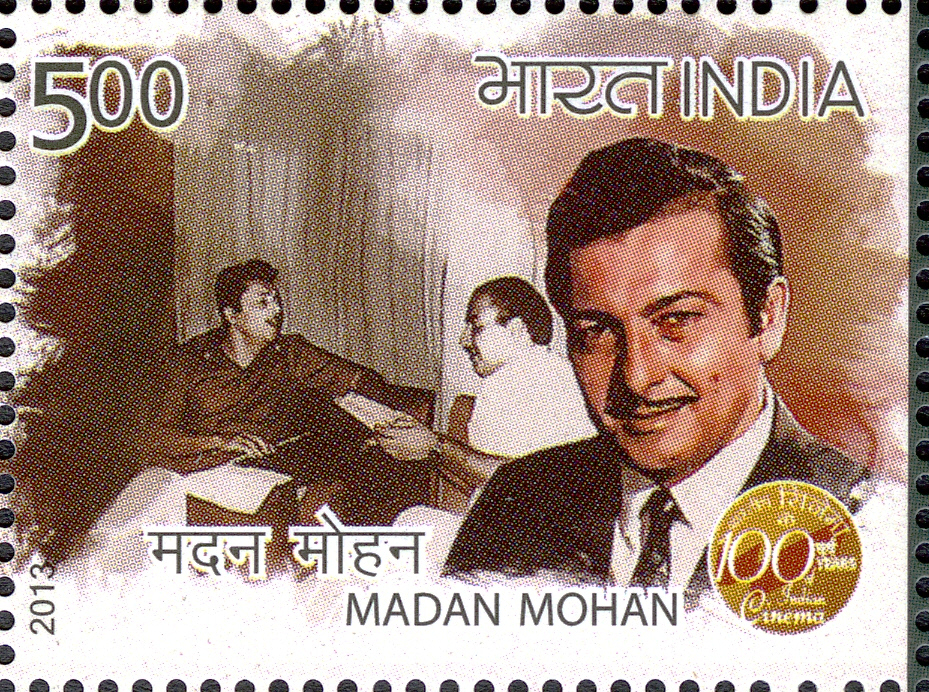
'Mera Saaya' to 'Veer Zaara': Timeless melodies Madan Mohan left behind

The king of ghazals and an overlooked composer, Madan Mohan who would have turned 96 on June 25, lives on through his timeless music.
When you see a playful Shyama dancing to Aye dil mujhe bata de (Bhai Bhai) or close your eyes in anguish, listening to Phir wohi shaam wohi gham (Jahan Ara) or feel the emptiness in Rang aur noor ki barat (Ghazal), you can only wonder about the genius behind such timeless music.
The composer of these classics, Madan Mohan, who was never billed among the top names in Bollywood music industry, also went on to show how the greatness of a musician can never be gauged by awards.
In the 50s and 60s that are considered to be the golden period of Hindi film music, there were over a dozen music composers who rose in the scene. Names like Naushad, Sachin Dev Burman, Shankar-Jaikishen (SJ) and OP Nayyar, dominated the music firmament with their distinct works. There were collaborations between production houses and composers – Navketan films and SD Burman; Raj Kapoor’s RK Films and Shankar Jaikishen – and music held the key for the success of films.
Madan Mohan maneuvered these dynamics in the industry, to quietly make a name for himself.
The slow start
While he began his innings in the industry after a stint at the All India Radio in 1950 with a movie called Aankhen, he had to wait a decade more to have a successful run.
Related news: Had there been paradise, Khayyam would have been its music composer
Yet the 50s had some memorable Madan Mohan moments like Meri yaad mein (Madhosh), Hum pyaar main jalne walon ko (Jailor) and with movies like Adalat (Yun hasraton ke daag, Unko yeh shikayat hai ke hum), Dekh Kabira Roya (Kaun aaya mere mann ke dware, humse aaya na gaya and Meri Veena Tu Bin Roye) and Gateway of India (Do ghadi who jo paas and Na hason hum pe).
The decade also established his bond with two singers – Mohammad Rafi and Lata Mangeshkar. Probably, he was the only composer who took complete control of Mangeshkar’s voice, extracting a unique effect that left many other composers wanting to emulate it. And the singer has always acknowledged the fact, saying that they were some of the most difficult numbers.
From numbers by Lata to Talat Mahmood and Rafi, he owned the genre of Ghazals, dived deep into human emotions – separation in Jaana tha humse door (Adalat), love in Kise pesh karoon (Ghazal), grief in Aapke pehlu mein aakar (Mera Saya).
The glorious chapter
It was the 60s that brought recognition to his musical brilliance, with popular scores for films like Anpadh (Aapki nazron ne samjha, Jiya le gayo ji mora) and Raj Khosla’s heroine-centric Woh Kaun Thi (Naina barse, Lagja gale and Jo humne dastan). Khosla’s association with him resulted in yet another hit with Mera Saaya (Tu jahaan jahaan chalelga, Nainon mein badra chhaye).
In Chetan Anand’s Haqeeqat, based on the Indo-China war, he brought together soulfulness and patriotic fervour in numbers like Zara si aahat hoti hai, Ab tumhare hawale and Hoke majboor mujhe, a fine example of his versatility as was Dulhan Ek Raat ki (Ek haseen sham ko and Maine rang li aaj chunariya).
- Madhan Mohan
- Madan Mohan was born on June 25, 1924 in Iraq
- He served in the army for two years before joining AIR, Lucknow
- Despite being nominated several times, he never won a FIlmfare Award
- Madan Mohan assisted SD Burman for a film Do Bhai in the late 40s
- He died on July 14, 1975, a few days after turning 50
Till the early 70s, Madan Mohan belted out his bests, hitting a crescendo with Dastak (1970), written and directed by Rajinder Sigh Bedi. Giving classical numbers like Mayi ri main kaa se kahoon, Baiyaan na dharo and Hum hai mata-e-koocha-o-bazaar at a time when Hindi music had begun tilting towards westernised tunes, Madan Mohan continued to dare his listeners to soak in melody.
A National Award for Best Music Director for Dastak was a befitting recognition for a composer, who never won the coveted Filmfare Award for reasons best known to industry insiders.
Till his death in 1975, Madan Mohan showed that he was far from giving up on his music, even as he took to heavy drinking amid setbacks.
Heer Ranjha, Hanste Zakhm, Bawarchi and Mausam were results of his quest to continue his brand that was dictated by his convictions as a composer. And almost 30 years later, in 2004, Yash Chopra’s Veer-Zara showcased his compositions (Tere liye humne, Do pal and Mein yahaan hoon) that seemed to have caught the fancy of a whole new generation – an accomplishment he would have definitely cherished had he been around.


